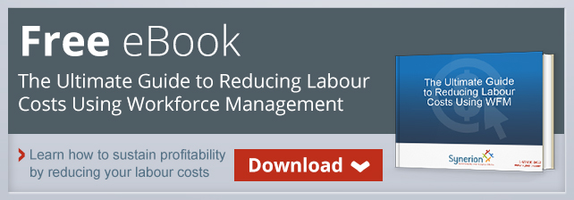
Businesses have always found themselves in a difficult position regarding compensation and employee performance. Without adequate compensation, businesses can't attract or retain top talent, which ultimately decreases overall company productivity and income. On the other hand, offering high amounts of compensation hasn't been shown to increase worker productivity. When navigating the waters of employee compensation and employee performance, keep these topics in mind to develop an employee compensation package that ensures employees are both happy and productive.
More Than Just Salary
Many businesses look solely at salary when determining compensation and employee performance. While salary does play a role in an employee's compensation, it isn't the totality of that package. Benefits such as health insurance and retirement matching play a large role in employee engagement and productivity. An employee who loves to travel may choose a position that offers telecommuting over a higher paying position for the opportunity to travel more, while an employee with a large family may prefer more inclusive health insurance benefits over a higher per hour rate. When measuring compensation and employee performance, businesses need to look beyond the dollar per hour breakdown in pay to determine their total compensation.
Pay for Performance
The Glasgow Caledonian University research center found increasing salary doesn't correlate to an increase in productivity and businesses that solely offer high salaries don't get that capital back through productivity. With this in mind, some businesses have implemented a "pay for performance" system that rewards top performers while still providing an adequate wage for mid-range performers. This system also keeps employee engagement high by giving employees some control over their compensation. Unfortunately, this system is difficult to enact in some industries or divisions fairly and implementing an unfair pay for performance program decreases employee satisfaction. When determining whether to use a pay for performance plan, businesses need to take care to implement the plan equally across the organization.
Supplemental Benefit Programs
Unlike the pay for performance programs which reward employees monetarily, supplemental benefit programs increase productivity by offering employees additional benefits. A wellness plan or flexible scheduling plan for top producers requires less capital for implementation and can be applied company-wide. For example, many businesses have been forced to reduce health insurance benefits which decreases employee satisfaction and impacts productivity. A supplemental benefit program could make up that gap in coverage for employees that regularly go to the gym or maintain a healthy BMI. This increases productivity through employees using less sick days and also benefits employee health and happiness. Supplemental benefits programs are a low cost way for employers to increase employee productivity.
Focus on Employee Value
While employee performance is in some ways linked to compensation, a greater amount of satisfaction and employee productivity is found in engagement. According to the Gallup State of the American Workplace, 18 percent of employees are actively disengaged in their job, costing employers between $450 and $550 billion in lost productivity. These employees cite harsh company policies and an inability to grow within the organization. These employees are biding their time to take new offers or reach retirement and actively negatively impact the employees around them. Companies that focus their efforts on employee satisfaction can naturally increase their productivity through engaged workers.
The connection between employee compensation and productivity is more nuanced than it seems at first glance. While it's easy to dismiss the link through studies that state employee compensation doesn't impact productivity, a more thorough look at the issue reveals that businesses need to become more creative in addressing the balance between company productivity, employee benefits, and employee satisfaction.
